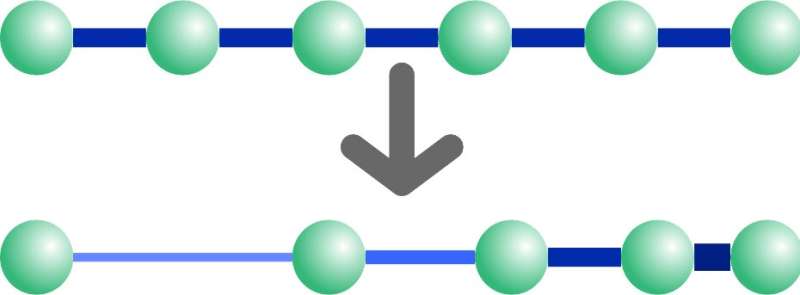Synthetic black holes radiate like real ones

Research led by the University of Amsterdam has demonstrated that elusive radiation coming from black holes can be studied by mimicking it in the lab.
Black holes are the most extreme objects in the universe, packing so much mass into so little space that nothing—not even light—can escape their gravitational pull once it gets close enough.
Understanding black holes is key to unraveling the most fundamental laws governing the cosmos, because they represent the limits of two of the best-tested theories of physics: the theory of general relativity, which describes gravity as resulting from the (large-scale) warping of spacetime by massive objects, and the theory of quantum mechanics, which describes physics at the smallest length scales. To fully describe black holes, we would need to stitch these two theories together and form a theory of quantum gravity.
Radiating black holes
To achieve this goal, we might want to look at what manages to escape from black holes, rather than what gets swallowed. The event horizon is an intangible boundary around each black hole, beyond which there is no way of getting out. However, Stephen Hawking famously discovered that every black hole must emit a small amount of thermal radiation due to small quantum fluctuations around its horizon.
Unfortunately, this radiation has never been directly detected. The amount of Hawking radiation coming from each black hole is predicted to be so small, it is impossible to detect (with current technology) among the radiation coming from all other cosmic objects.
Alternatively, could we study the mechanism underlying the emergence of Hawking radiation right here on Earth? This is what researchers from the University of Amsterdam and IFW Dresden set out to investigate. And the answer is an exciting “yes”.
Black holes in the lab
“We wanted to use the powerful tools of condensed matter physics to probe the unattainable physics of these incredible objects: black holes,” says author Lotte Mertens.
To do so, the researchers studied a model based on a one-dimensional chain of atoms, in which electrons can “hop” from one atomic site to the next. The warping of spacetime due to the presence of a black hole is mimicked by tuning how easily electrons can hop between each site.
With the right variation of hopping probability along the chain, an electron moving from one end of the chain to the other will behave exactly like a piece of matter approaching the horizon of a black hole. And, analogous to Hawking radiation, the model system has measurable thermal excitations in the presence of a synthetic horizon.
Learning by analogy
Despite the lack of actual gravity in the model system, considering this synthetic horizon gives important insight into the physics of black holes. For instance, the fact that the simulated Hawking radiation is thermal (meaning the system appears to have a fixed temperature) only for a specific choice of spatial variation of the hopping probability, suggests that real Hawking radiation may also only be purely thermal in certain situations.
Additionally, the Hawking radiation only occurs when the model system starts out without any spatial variation of hopping probabilities, mimicking flat spacetime without any horizon, before being changed into one hosting a synthetic black hole. The emergence of Hawking radiation therefore requires a change in the warping of spacetime, or a change in how an observer looking for the radiation is perceiving this warping.
Finally, Hawking radiation requires some part of the chain to exist beyond the synthetic horizon. This means that the existence of the thermal radiation is intricately connected to the quantum-mechanical property of entanglement between objects on either side of the horizon.
Because the model is so simple, it can be implemented in a range of experimental setups. This could include tuneable electronic systems, spin chains, ultracold atoms or optical experiments. Bringing black holes to the lab can bring us one step closer to understanding the interplay between gravity and quantum mechanics, and on our way to a theory of quantum gravity.
The research was published in Physical Review Research.
More information:
Lotte Mertens et al, Thermalization by a synthetic horizon, Physical Review Research (2022). DOI: 10.1103/PhysRevResearch.4.043084
Citation:
Synthetic black holes radiate like real ones (2022, November 11)
retrieved 11 November 2022
from https://phys.org/news/2022-11-synthetic-black-holes-real.html
This document is subject to copyright. Apart from any fair dealing for the purpose of private study or research, no
part may be reproduced without the written permission. The content is provided for information purposes only.
For all the latest Science News Click Here
For the latest news and updates, follow us on Google News.

